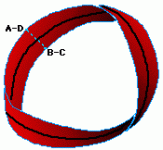bear said:Well, despite SY's saying that the tube guys would benefit, most of the "heavy hitters" don't probably come and read anything in this section...
Thus the lack of activity... it would be nice for those with some chops in this area to get involved!!
I hearby tender the motion for moving this thread to a more oft read forum section.
Perhaps dump a link into the Tube section for those interested to follow over? Putting this one into Solid State...
Bear, your words are looking more and more astute...
Just measured some stuff..
Using a Coby mp3 player(list price 9.99), 1/8th inch stereo jack (freebie with the player) feeding into a Behringer UB502(list price 49.99), 1/4 mono jacks (list price 1.49)..this feeding an NAD receiver of some kind (inherited). (yes, I know it's all esoteric high end stuff, that's why I included the prices, to bowl you all over with envy..).
Used the HP current clamp meter over the line cord (two prong) and over the IC after the split...
Saw the music through the line cord..not much, but there in the noise.
Saw a little bit of signal when I clamped over the right channel of the IC...again, terribly far down into the noise.
Gotta make a better current pickup, the HP was 100 mV per amp, I need sensitivity at least 2 orders of magitude better to see what I want.
Spoke to one of the physicists about the problem of the two IC's tying a source to an amp....tried to trick him.. Said, with that setup, are the IC's really shielding their signals...
His answer: Yes, at 50%.. bummer, I was really hoping to trick him...
Cheers, John
cable morphology
hey John...
Maybe twisting cables such as this would solve the "which side is ground, which side hot" conundrum, as it would be self-quenching 😀
interesting thread...
PS: PM me, maybe I can fix some solder tools...😉
jneutron said:
<snip>
Spoke to one of the physicists about the problem of the two IC's tying a source to an amp....tried to trick him.. Said, with that setup, are the IC's really shielding their signals...
His answer: Yes, at 50%.. bummer, I was really hoping to trick him...
Cheers, John
hey John...
Maybe twisting cables such as this would solve the "which side is ground, which side hot" conundrum, as it would be self-quenching 😀

interesting thread...
PS: PM me, maybe I can fix some solder tools...😉
Attachments
Re: cable morphology
Ya gotta love it..😀
Hey, where'd you get "quenching" from...😉
Thanks for the offer.
Cheers, John
auplater said:
hey John...
Maybe twisting cables such as this would solve the "which side is ground, which side hot" conundrum, as it would be self-quenching 😀
interesting thread...
PS: PM me, maybe I can fix some solder tools...😉
Ya gotta love it..😀
Hey, where'd you get "quenching" from...😉
Thanks for the offer.
Cheers, John
banging the nail on the head...
beating the dead horse...
floggin da mule...
"Discuss what are and where to get and how to make the best bits. PCB's, Caps, Transformers. "
I really want this thread to get some serious input and debate - I don't know enough about the topic to say much of import...
_-_-bear
beating the dead horse...
floggin da mule...
"Discuss what are and where to get and how to make the best bits. PCB's, Caps, Transformers. "
I really want this thread to get some serious input and debate - I don't know enough about the topic to say much of import...
_-_-bear
practical vs. theory
Hey John...
I've always had a little difficulty grasping the practical aspects of band theory applied to all the practical effects of what goes on in bulk metal components that are imperfect; i.e., have grain boundaries, impurities in both composition and structure, that sort of thing.
What with all the focus on supposed cable conduction differences that seems to be the rage in certain circles, and your detailed look at grounding concerns, care to comment on using band theory (or not) to help predict what's going on from practical aspects. (or is it a useless construct attempting to quantify something best left to empirical determination)?
John L.
Hey John...
I've always had a little difficulty grasping the practical aspects of band theory applied to all the practical effects of what goes on in bulk metal components that are imperfect; i.e., have grain boundaries, impurities in both composition and structure, that sort of thing.
What with all the focus on supposed cable conduction differences that seems to be the rage in certain circles, and your detailed look at grounding concerns, care to comment on using band theory (or not) to help predict what's going on from practical aspects. (or is it a useless construct attempting to quantify something best left to empirical determination)?
John L.
Well AES54 is just out (With a few errors in some of the drawings), and is an interesting read, and Jim Brown has just pointed out on the pro audio mailing list that he has a paper aimed at ham radio operators, but with much that is relevant to RFI in an audio context at: http://audiosystemsgroup.com/RFI-Ham.pdf
In fact a lot of his stuff at:http://audiosystemsgroup.com/publish is well worth the time.
Regards, Dan.
In fact a lot of his stuff at:http://audiosystemsgroup.com/publish is well worth the time.
Regards, Dan.
myhrrhleine said:So, is this thread finished?
It looks like jneutron has been away since December 17th.
I am the first to admit that what I've stated, that of wrapping the power cables together, or even the pre cable wrapped around the IC's, seems counterintuitive..but it is not. It works, and works very well
Do you have in mind 2 or 3 turns per foot ?
.
- Status
- Not open for further replies.
- Home
- Design & Build
- Parts
- Ground loops and containment
